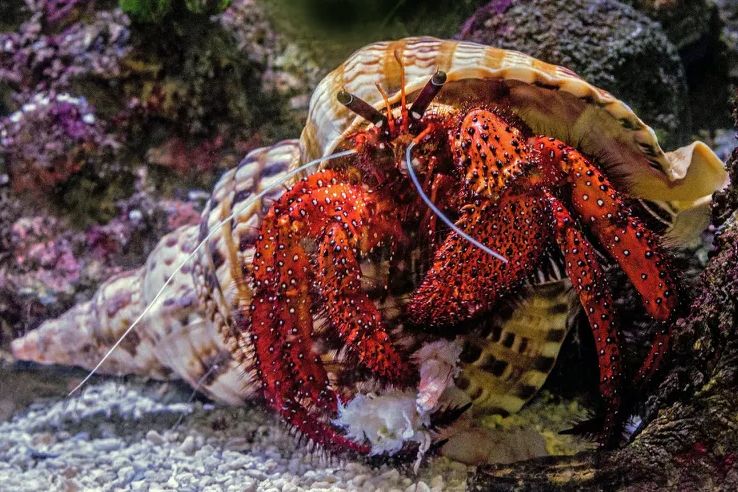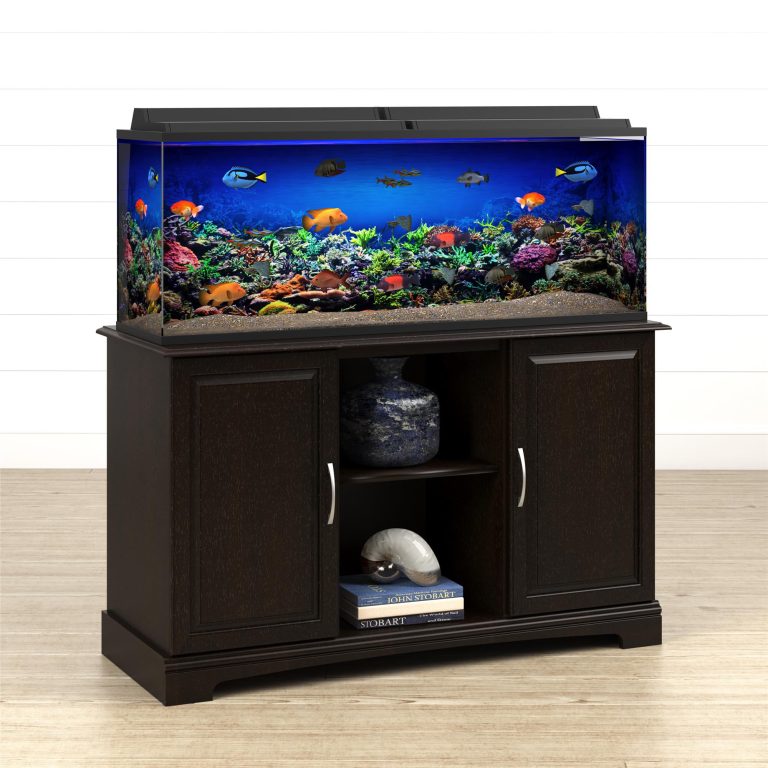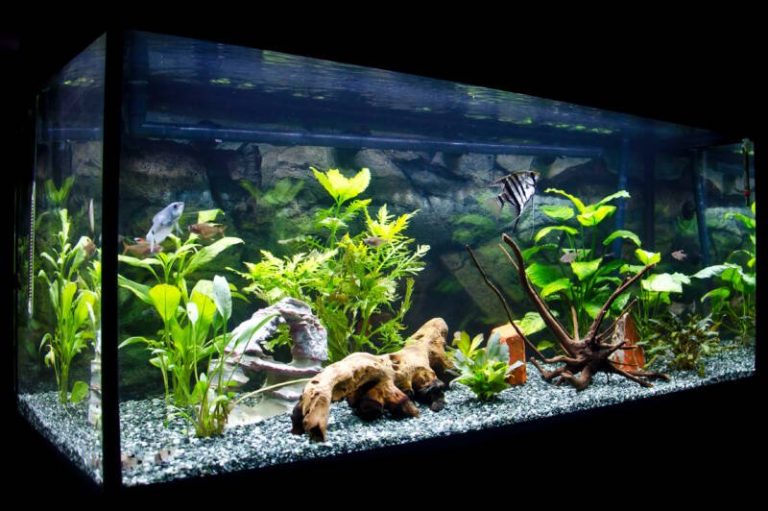Eliminate Limpets in Your Aquarium with These Expert Tips
To get rid of limpets in an aquarium: physically remove them and increase water flow. Limpets are tiny creatures that attach themselves to rocks or aquarium glass and can be quite hard to remove.
In aquariums, limpets can be a nuisance and can harm other aquatic creatures. Fortunately, there are several methods to get rid of limpets. One method is to physically remove them with a plastic scraper or toothbrush. Another method is to increase the water flow in the aquarium, as limpets prefer still waters.
It is essential to take frequent water tests to ensure healthy water conditions for aquatic life. Additionally, reducing the amount of organic debris in the aquarium can also prevent limpets from thriving. By following these steps, you can effectively eliminate limpets from your aquarium.

Credit: www.liveaquaria.com
What Are Limpets?
Limpets, also known as aquatic snails, can be a common problem for aquarium enthusiasts. These small, flat creatures can attach themselves to the glass, plants, rocks, and even other living organisms in the aquarium. In this section, we will discuss the definition, appearance, behavior, and habitat of limpets.
Definition Of Limpets And Their Appearance
Limpets are small, oval-shaped creatures that belong to the mollusk family. They are usually about one to two inches in length and come in various colors, including black, brown, and green. They have a flattened cone-shaped shell with a slightly pointed apex, which allows them to attach themselves to surfaces using a muscular foot.
Limpets have a distinct circular or horseshoe-shaped tooth array that they use to scrape algae and other organic matter from the surfaces they attach to.
Brief Explanation Of Their Behavior And Habitat
Limpets are known for their ability to attach themselves firmly to various surfaces. They are found in both freshwater and saltwater habitats and can survive in a wide range of temperatures. Limpets feed on algae and other organic matter and play a crucial role in maintaining a balanced ecosystem in the aquarium.
If left unchecked, limpets can become a nuisance and start to damage the plants and other inhabitants of the aquarium by consuming excessive amounts of algae. Limpets can also reproduce quickly, which can lead to an overpopulation issue in the aquarium.
The ideal habitat for limpets is a well-maintained aquarium with proper lighting, temperature, and ph levels. Regular tank maintenance, water changes, and proper feeding can help prevent limpet overgrowth.
Understanding the definition, appearance, behavior, and habitat of limpets is essential in maintaining a healthy aquarium ecosystem. By following proper maintenance procedures and ensuring suitable environmental conditions, aquarium enthusiasts can get rid of limpets and prevent them from becoming a problem in their aquariums.
Why Are Limpets An Issue In Aquariums?
Limpets In Aquariums: A Growing Concern
Keeping an aquarium is not just about the appeal of a beautiful water display in your home or office. It’s also about maintaining a healthy environment for your aquatic pets to thrive. However, one of the common problems faced by many aquarium owners is the infestation of tiny creatures known as limpets.
Limpets can cause significant damage to the aquatic environment and the inhabitants. Here are some specific points to consider when dealing with limpets:
- Negative effects on the aquarium environment and inhabitants: Limpets will consume and destroy living marine plants and algae that often provide the primary source of food for your aquarium’s inhabitants. The problem is that if left unchecked, limpets will starve your fish and other creatures, leading to disease and death.
- Depletion of oxygen levels: Limpets consume a lot of oxygen, and if their numbers go up, the tank’s oxygen levels might plummet, which can cause fish and other animals to suffocate and die.
- Disruptive habitat effects: Limpets serve as hosts to many other parasites and predators, which can thrive in their shells and on their surfaces. The presence of these organisms in the aquarium can severely disrupt the habitat by introducing potential contaminants, toxins, and infections.
Common Signs Of Limpet Infestation
If you are a new aquarium owner, you might not know how to identify limpets on your own. Here are some common signs of limpet infestation that you need to watch out for:
- Weird brown or green patches on your aquarium’s glass or other surfaces.
- Unexplained algae outbreaks.
- Slow-moving or lethargic fish and other creatures.
- Accumulation of fecal matter in the tank.
- Sudden drops in water quality parameters like ph and nitrite levels.
- Dead or dying aquatic plants.
To sum up, limpet infestation can have substantial adverse effects on your aquarium’s inhabitants and environment. If you notice any of the symptoms mentioned above, take appropriate steps to remove the limpets from your aquarium. Ignoring the problem can lead to disastrous consequences for your aquatic pets.
Always keep your aquarium clean and healthy!
Common Types Of Limpets Found In Aquariums
Limpets are a common problem in aquariums, and identifying the specific type of limpet in your tank can be the first step towards getting rid of them. Here are the most commonly found types of limpets in aquariums:
Description Of The Different Types Of Limpets Commonly Found In Aquariums
Acorn Barnacle
- This limpet has a conical shape with a pointed top, resembling an acorn.
- It attaches itself to surfaces using a calcified base and can be found in a variety of colors, including white, black, and gray.
- Acorn barnacles can grow up to 0.4 inches in height and have a hard, protective shell.
Keyhole Limpet
- Keyhole limpets have a circular base and a keyhole-shaped opening at the top, which gives them their name.
- They can be found in various shades of green, brown, and yellow.
- Keyhole limpets consume algae and other organic matter and have a reputation for being difficult to remove from aquarium glass surfaces.
Slipper Limpet
- Slipper limpets have a broad, flattened shell that resembles a slipper; they can often be found attached to rock surfaces.
- They typically range in color from light gray to yellowish-brown.
- Slipper limpets are often considered a nuisance in aquariums, as they consume algae and other organic matter.
Identifying Characteristics And Behavior Of Each Type
Acorn Barnacle
- Acorn barnacles are filter feeders, consuming microscopic zooplankton and phytoplankton.
- They attach themselves to hard surfaces, such as rocks, glass, and even other animals, for protection.
- In aquariums, acorn barnacles can quickly become overpopulated and damage underwater structures if not properly managed.
Keyhole Limpet
- These limpets are herbivorous and feed mainly on algae and other organic matter on aquarium surfaces.
- They can be challenging to remove from aquarium glass surfaces due to their strong adhesive abilities.
- Keyhole limpets can reproduce at a fast rate, which can lead to overpopulation and crowded environments.
Slipper Limpet
- Slipper limpets are herbivores, primarily feeding on organic matter and algae in the aquarium.
- They are known to attach themselves to the shell of other animals, such as snails, for added protection.
- Slipper limpets should be removed immediately from the tank, as they can become a nuisance and are known to damage corals and other aquatic organisms.
Now that you know the common types of limpets that can be found in aquariums, you can take the necessary steps to get rid of them and maintain a healthy aquatic environment for your underwater pets.
Signs Of Limpet Infestation
Aquarium owners are well aware of the frustration that comes with dealing with limpet infestation in their tanks. Not only are these small marine snails unsightly, but they also pose a risk to other marine life in the aquarium. Identifying the early signs of limpet infestation is crucial to tackling the problem before it gets out of hand.
In this section, we’ll explore the most common signs of limpet infestation and provide you with tips on how to detect them.
Detailed Explanation And Visual Aids Of The Common Signs Of Limpet Infestation
Limpets are often difficult to detect, especially in their early stages. However, some tell-tale signs may indicate their presence in your aquarium. Many common signs of limpet infestation include:
- Abnormal patchy pigmentation on the aquarium’s walls, rocks, and coral.
- Irregular growth of algae in the aquarium may suggest that the algae is being consumed by limpets.
- Small, conical shells (usually beige, gray, or green in color) on the walls of the aquarium may indicate limpets.
- Elevated levels of calcium buildup around the aquarium’s walls may suggest that limpets are present.
Visual aids can be incredibly useful in identifying limpets. Use a magnifying glass to examine the walls of the tank for small, conical shells and look for abnormal patchy pigmentation on the walls, rocks, and coral. You can also use a flashlight to help spot limpets in the aquarium, especially in hard-to-reach areas.
Tips On How To Look For Limpets And Their Eggs
To detect limpets and their eggs, you need to inspect all areas of the aquarium thoroughly. Begin by checking the walls of the tank for tell-tale signs of limpet infestation. Check behind rocks and other aquarium decor, as these areas often harbor limpets.
Examine the coral closely, looking for unusual pigmentation and small, conical shells.
You can also look for limpet eggs by examining the walls, which usually look like small white spots. Using a scraper to clean the walls of the aquarium can reveal any hidden eggs and adults.
Regular maintenance of the aquarium can help you detect limpets early on. During routine water changes, inspect the walls and coral, searching for any signs of limpets and their eggs. Keeping the aquarium clean and the water healthy will help prevent limpet infestation.
Detecting limpet infestation in your aquarium is critical to keep your marine life safe and healthy. Look out for any signs of infestation, such as pigmentation abnormalities, irregular algae growth, small conical shells, and calcium buildup. Inspect the entire aquarium regularly and maintain healthy conditions to prevent further infestations.
Steps Before Treatment
Explanation Of The Precautions To Take Before Eliminating Limpets
Limpets are a common sight in aquariums. However, they can quickly become a problem if not dealt with correctly. Before taking any steps towards eliminating limpets, consider the following precautions:
- Understand that limpets are living creatures and should not be considered pests. They may have a beneficial impact on the aquarium’s ecosystem.
- Determine whether or not the limpets are causing significant damage to the plants and organisms in the aquarium. If they are not causing severe harm, it may be best to leave them alone.
- Consider alternative methods of eliminating limpets before resorting to chemical treatment. Manual removal, for example, can be done quite easily and safely.
Removing Any Aquatic Life That May Be Affected
Before starting any treatment method, ensure that any aquatic life that could be affected is removed from the aquarium. This includes snails, shrimp, and fish.
It is best to place them in a separate container with the same water temperature as the aquarium and enough oxygen to survive for the duration of the treatment. Carefully observing the creatures for any adverse effects before releasing them back into the main aquarium.
Cleaning The Aquarium And Checking The Water Chemistry
Cleaning the aquarium is perhaps one of the most important steps before treating for limpets. Follow these steps:
- Remove all decorations and equipment from your tank, including any rocks, caves, and plants.
- Clean these items with hot water and scrub them thoroughly, making sure you remove all limpets.
- Use a gravel vacuum to clean the substrate of any excess debris.
- After cleaning, thoroughly rinse the gravel, rocks, and plants, making sure there is no residue left behind.
- Check the water chemistry, focusing on ph levels and high nitrates. This will ensure a healthy environment for any aquatic life and help prevent future limpet infestations.
By following these steps, you can minimize the risk of harming your aquatic life and effectively eliminate limpets from your aquarium. Always remember to prioritize the safety of your creatures and approach the treatment carefully.
Choosing The Right Elimination Method
Limpets are small, cone-shaped aquatic snails that can quickly take over an aquarium. They are often considered pests due to their ability to cause damage to the tank’s ecosystem and affect the growth of plants. Eliminating limpets is an essential task for any aquarium owner.
However, choosing the right elimination method can be challenging. In this section, we will explore the different methods of eliminating limpets, along with their pros and cons, and precautionary measures.
Explanation On The Different Methods Of Eliminating Limpets
The following methods are commonly used for eliminating limpets in an aquarium:
- Manual removal: This involves picking out the limpets from the aquarium using tweezers or any other suitable tool.
- Chemical treatment: Various commercial chemical treatments are available in the market that can be used to eliminate limpets.
- Natural predators: Introducing natural predators like crabs and snails in the aquarium can also eliminate limpets.
Pros And Cons Of Each Method
Manual Removal
- Pros: It is an inexpensive method, and no harmful chemicals are involved.
- Cons: It can be time-consuming, and some limpets might still be left behind.
Chemical Treatment
- Pros: It is a quick and effective method, and all the limpets can be eliminated in one go.
- Cons: Chemical treatments can be expensive and can cause harm to other aquatic animals.
Natural Predators
- Pros: It is a natural and environmentally-friendly method, and it doesn’t involve any harmful chemicals.
- Cons: Predators, if not chosen wisely, can cause harm to other aquatic animals and may not be effective in eliminating all of the limpets.
Precautionary Measures
- Before choosing any method, make sure to research and understand the potential risks and effects on your tank’s ecosystem.
- If using chemicals, carefully follow the instructions and use the recommended dosage.
- Introduce natural predators into the aquarium gradually.
- Monitor the aquarium’s environment and make necessary adjustments accordingly.
Choosing the right method for eliminating limpets in an aquarium can greatly impact the ecosystem’s health. Each method has its pros and cons, and it’s essential to choose the one that best suits your tank’s needs. By following the precautionary measures, you can ensure a safe and effective elimination of limpets from your aquarium.
Picking The Right Elimination Technique
Detailed Guidance On Choosing The Best Technique Suitable For The Aquarium
Eliminating limpets in an aquarium requires the right technique to avoid damaging the ecosystem. Consider the following factors when selecting the best method:
- Type of aquarium inhabitants: It’s essential to choose a technique that won’t harm other tank occupants. If you have snails or other invertebrates, avoid using chemicals that may kill them.
- Limppet population: If you only have a few limpets, manual removal may be sufficient. However, if they’re in large numbers, you need a more aggressive approach.
- Size of aquarium: The size of the tank also matters when selecting a technique. For instance, some chemicals may harm the aquarium if applied in large quantities.
Steps To Avoid Any Unwanted Damage To The Aquarium Inhabitants
When eliminating limpets, take the following precautions to avoid harming other inhabitants in the aquarium:
- Research the technique: Before applying any elimination technique, understand its effect on other organisms in the aquarium. Some chemicals may affect the tank’s water quality or harm sensitive fish species.
- Isolate affected areas: If the limpets have infested a particular region of the tank, isolate it before applying a technique. This reduces the likelihood of other organisms being affected.
- Follow instructions carefully: If you’re using chemicals or other products, follow the instructions carefully and use the recommended dosage. Overusing products may harm the tank and its inhabitants.
- Keep the tank clean: Regular cleaning of the tank reduces the chances of limpets infesting it. Ensure that you get rid of any decaying plant matter or food debris that could attract limpets.
When picking the right elimination technique, consider the above factors, and follow the steps to eliminate limpets without harming other inhabitants in the aquarium.
Techniques For Eliminating Limpets
Are you struggling to keep your aquarium clean due to the presence of limpets? These small, conical snails can be a nuisance and make it difficult to maintain a healthy aquatic environment for your fish. We will discuss effective techniques for eliminating limpets so you can keep your aquarium in top condition.
Step-By-Step Guide On Implementing Each Chosen Technique
Chemical Treatment
- Choose a copper-based treatment that is effective against snails and follow the manufacturer’s instructions carefully.
- Remove any activated carbon from your aquarium’s filtration system before applying the treatment.
- Wait for the recommended amount of time before reintroducing activated carbon.
Manual Removal
- Use a scraper or brush to detach the limpets from the aquarium’s surface.
- Take care not to damage any plants or decorations in your aquarium.
- Vacuum up any loose debris afterward to ensure that the water remains clean and healthy.
Precautions To Take While Applying Each Technique
Chemical Treatment
- Ensure that your fish are removed from the aquarium before applying the treatment.
- Take care to follow the manufacturer’s instructions carefully to avoid overdosing and harming your aquatic life.
- Monitor the ph levels of your aquarium and adjust accordingly after the treatment.
Manual Removal
- Ensure that any tools used for scraping are thoroughly cleaned before use.
- Limit the amount of manual removal to avoid disturbing your aquarium’s ecosystem too much.
- Take care to avoid accidentally removing healthy algae or plants from your aquarium.
With these techniques, you can effectively get rid of limpets in your aquarium. Whether you choose to use a chemical treatment or manually remove them, it is crucial to follow precautions to maintain a healthy and balanced aquatic environment. Keep your aquarium clean and healthy, and your fish will thrive.
Frequently Asked Questions On How To Get Rid Of Limpets In Aquarium
What Are Limpets In Aquarium?
Limpets are small, cone-shaped snails that attach themselves to surfaces in aquariums, causing concerns for aquarists.
Why Are Limpets Harmful For Aquarium?
Limpets compete with corals for space and food, and may damage the corals, causing them to die.
How To Remove Limpets From The Aquarium?
Manual removal by scraping the inside of the aquarium with a razor blade or using a trap is the most effective way to remove limpets.
How To Prevent Limpets In The Aquarium?
Maintaining a healthy aquatic ecosystem, avoiding overfeeding and overstocking, and adding creatures that feed on limpets are some ways to prevent their growth in the aquarium.
Conclusion
After understanding the steps to get rid of limpets in an aquarium, it is important to maintain a clean environment for your aquatic pets. Regular cleaning of the tank and equipment, checking water parameters, and removing any uneaten food can prevent the recurrence of limpets.
Additionally, introducing snails or algae eaters can help control the population of limpets naturally. Being vigilant and taking prompt action when you notice the presence of limpets will ensure the healthy growth of your aquatic life. Ultimately, by following the methods mentioned in this post, you can successfully eliminate limpets from your aquarium and enjoy a safe and aesthetically pleasing environment for your aquatic friends.
Keep your aquarium a healthy and happy place for your aquatic life!






